Let’s face it. You’ve been in town too long, wandering the concrete valleys of the big city, rushing from meeting to meeting, a gulped hot coffee the big treat of the day. Summer has been hell. You need to see trees, you need a long soak in a hot bath, slowly sip something very cold and indulge in a big Japanese spread that will have you staggering back to your futon. You need to get off the computer, unplug and recharge. You need the simple luxury of a place that exudes history and Japanese culture.
There are a handful of hotels and ryokan around Japan that have been welcoming weary travelers such as yourself for a very long time. In fact, none of these are less than 130 years old. You pay a premium for the service and the surroundings, but you take home an experience you will never forget. Two are just southwest of Tokyo; one just a short hop, really, by shinkansen to the north. And the other—well, it’s a bit far away, but then it is the oldest hotel in the world.
Jinya
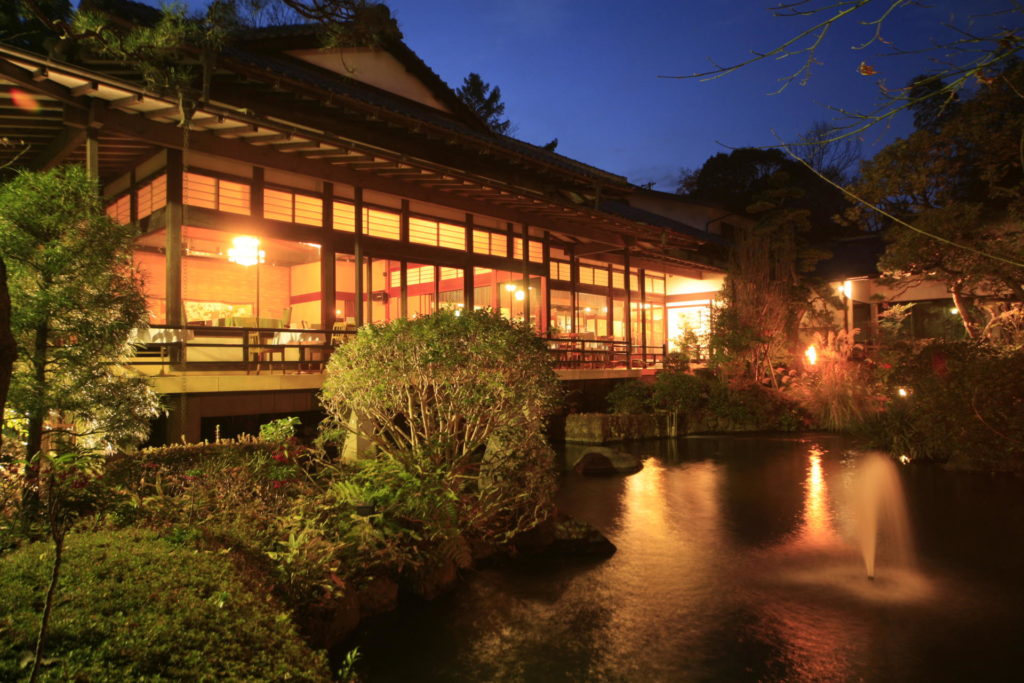
If elegance is what you want, it’s what you’ll get at Jinya. The hotel will send its Rolls-Royce Phantom to pick you up and take you to Tsurumaki Onsen, roughly west of Kamakura and Yokohama and about an hour from Shinjuku. The hotel is a little world of things Japanese all to itself, set in a 10,000-tsubo (about 8.2-acre) garden.
“Jinya opened in Taisho 7 (1918), although the Matsunokaze (residence) is much older,” says President Tomio Miyazaki. His wife Tomoko is the hotel’s okami, the traditional female overseer of the daily operations. “It was built by a family as a guest house for the Meiji Emperor on a visit, and was later moved here.”
Yes, we commoners can now stay in it, complete with its own outdoor cypress bath, garden and tasteful simplicity; it is very, very nice (and big enough that it was used as a banquet room before conversion into a guest room).
“The autumn is a great time to visit with the garden in beautiful colors,” Tomio Miyazaki says. “As is spring, when all the cherry trees are in bloom.” But what first attracted people to the area, he says, is the hot springs, with an onsen being operated here since at least the Kamakura Era, more than 700 years ago.
“The water has one of the highest concentrations of calcium in the world—more even than milk!” he says. “It’s 100 percent natural, and we use it straight from the ground.”
The hotel has three rooms with attached rotenburo apart from the Matsukaze, as well as large indoor and outdoor common baths. It’s the smallest hotel of the group, with just 20 rooms.
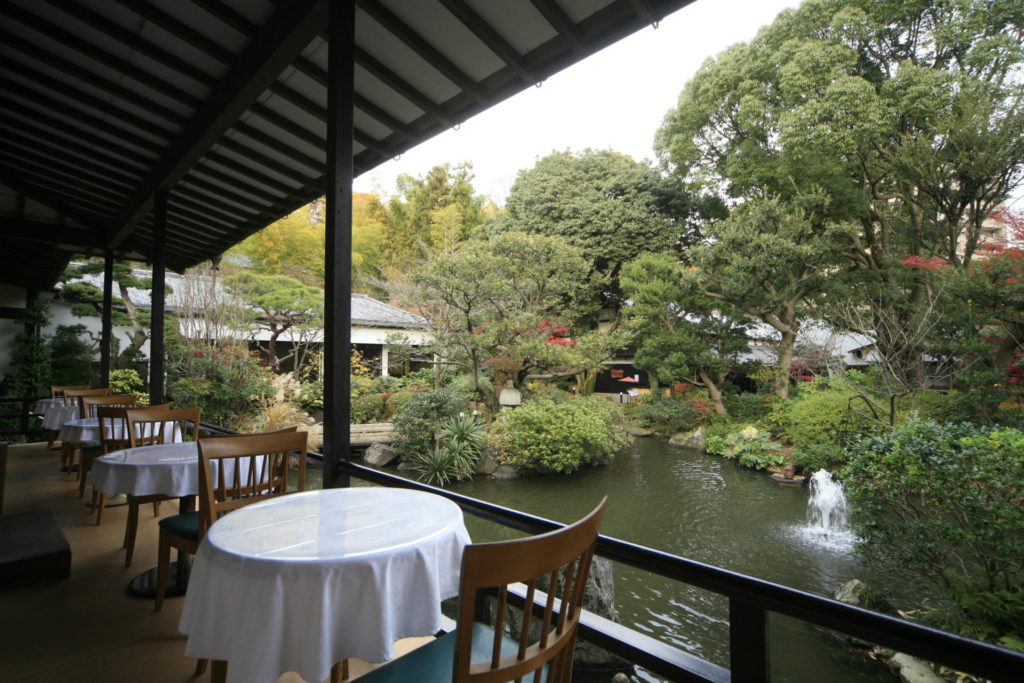
While it is a traditional Japanese ryokan, the Miyazakis have provided some flexibility for customers, which is uncommon. One room has both a tatami area and a western section with beds—if you’re not crazy about futons, this is a good choice.
They have a selection of traditional Japanese clothing available for photography, something even non-staying guests can enjoy. They make a special point in meal preparation to make every effort to prepare vegetarian or allergy-safe meals and will even change ingredients if the guest has any strong dislikes.
If you call ahead to let them know, they can even provide a late service for the traditional course meals. These are all services you would not normally find at traditional inns.
The food is very good. The hotel gardens are so big, according to Tomio Miyazaki, that guests can try picking their own sansai—wild vegetables—in spring. “We also vary our menus every month to use the best seasonal ingredients,” he adds.
Motoyu Jinya
2-8-24 Tsurumaki-kita, Hadano-shi, Kanagawa-ken 257-0001
Tel: (0463) 77-1300
Web: www.jinya-ryokan.jp
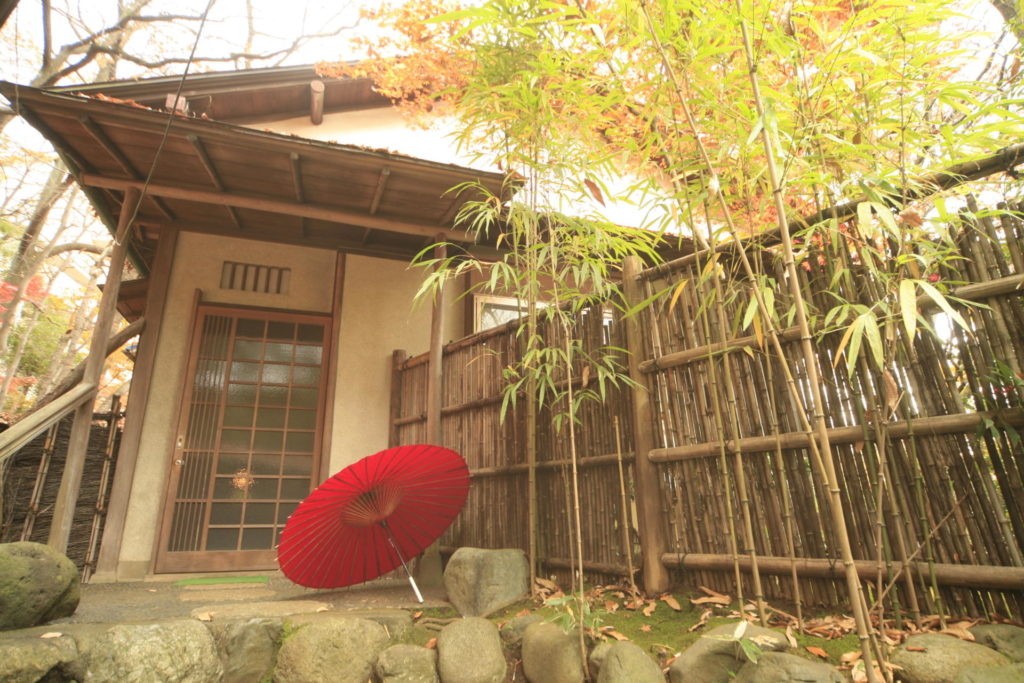
Fujiya
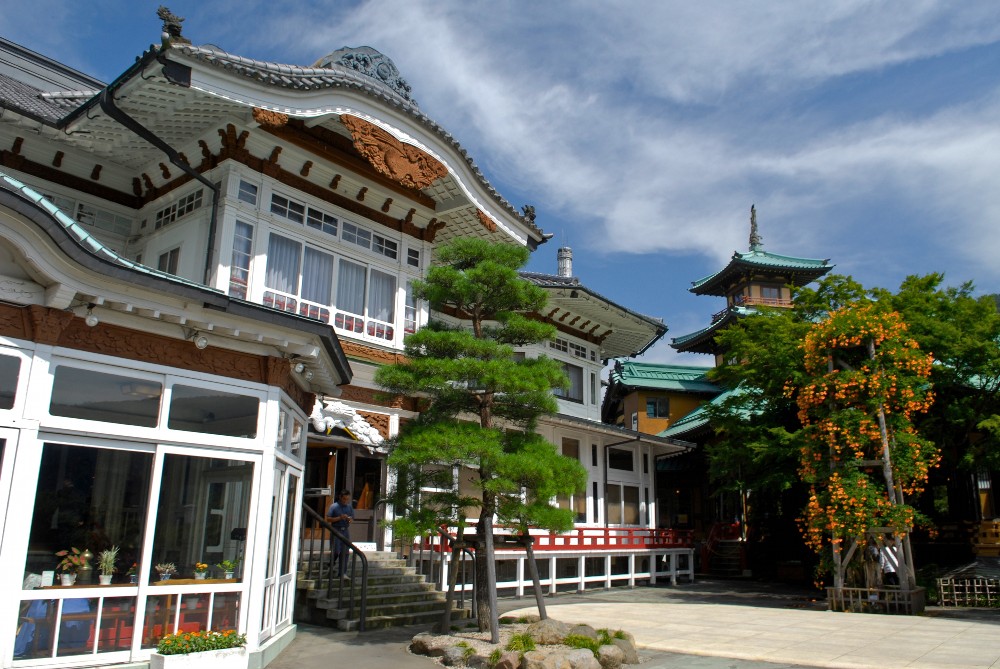
If getting into a yukata and stretching out on fragrant tatami mats to enjoy the autumn leaves is a bit too much for you, there is no other western destination quite like the Fujiya in Hakone. A wonderful, rambling collection of five buildings—the Main Building, Comfy Lounge, Restful Palace, Flower Palace and Forest Lodge—the Fujiya opened in 1878, with the current structures built between 1891 and 1960.
“The hotel really is a classic,” says Front Office Manager Patrick Carey. “You get a sense of history throughout the hotel. A couple of the buildings have traditional Japanese rooflines, like a temple or a shrine, which gives it part of its unique look.”
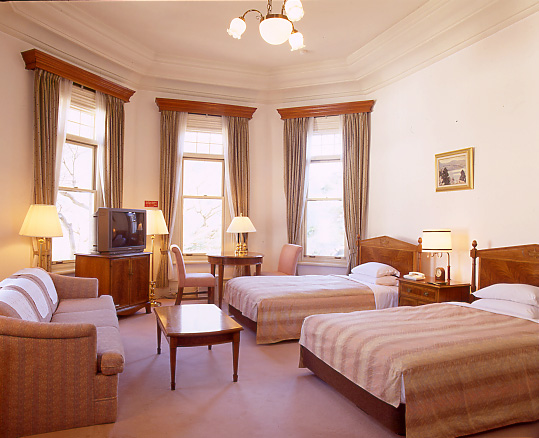
That means some of the rooms are high-roofed, white and very Victorian; the Flower Palace and Forest Lodge have warm woods and something of a contemporary Japanese feel.
“The Kikaso-in was originally built in 1895 as a summer home for the Imperial family,” Carey explains. “So there are lots of chrysanthemum crests in the three rooms of the building, while the fourth is the kaiseki restaurant.”
There are carvings and sculptures on and around the buildings and gardens, some occasionally funky carpets, and even such timeless details as the wooden key tags painted with the flowers of each of the florally-named rooms of the Flower Palace.
The one thing the hotel does not have is a large onsen. The women’s public bath can accommodate seven; the men’s three. But hot spring water is pumped to every room, so you have an onsen in your own room. The indoor pool also is hot spring water
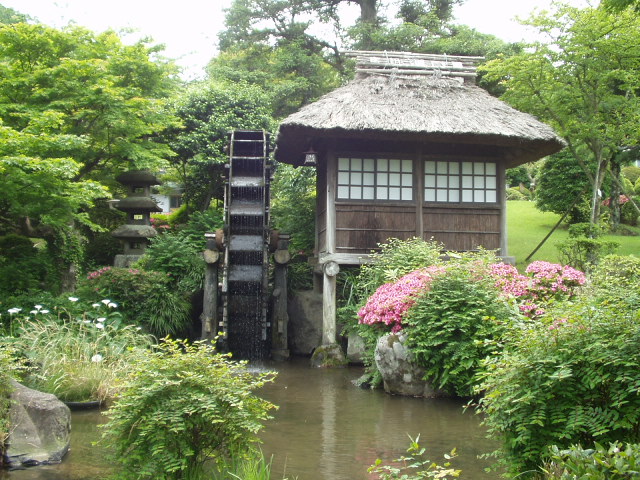
Carey adds that it’s a great place to stay if you don’t want to be connected to the rest of the world or paint the town red. “We’re in a pretty quiet part of Hakone, so there’s not a lot of night life,” he says. “we only have Internet connection in the Lobby.”
One interesting package the hotel offers is based on the dollar. “We just add US$1 to the previous price every year,” Carey says. “The tax and service charge is in yen, but otherwise it’s on a dollar basis, so it’s really cheap, especially with the strong yen.”
He also adds that it’s a great place to celebrate a special occasion, particularly if you’re the sentimental type. “People can come back in many years, for an anniversary or something, and know the hotel will be just the same in the future.”
Fujiya Hotel
359 Miyanoshita, Hakone-machi, Kanagawa-ken 250-0404
Tel: (0460) 82-2211
E-mail: shukuhaku@fujiyahotel.co.jp
Web: www.fujiyahotel.jp
Ryugon

Like the Fujiya, the ryokan Ryugon, located near Muikamachi, Niigata, is a collection of buildings built at different times. At Ryugon, though, they are all more than 210 years old. Edo-era samurai houses from this snowy area were brought together to create this unique ryokan 41 years ago.
“There has been a boom in traditional architecture, so my job often involves guiding experts around to look at our buildings,” says Yukio Fukuda, the general manager. “We’ve been the setting for a beer and a car commercial. We get very heavy snow here in the Echigo region, so the beams in traditional houses are very large, very strong and quite attractive.
“There are people who have taken buildings from the area elsewhere for hotels and restaurants, but they really seem at home here—they’re part of the traditional Echigo culture.”
Wood is definitely the theme here. The entry area features dark, heavy beams and shining wood flooring; the lobby has not only sofas and chairs, but also a vast stretch of tatami mats and an irori, the sunken hearth that was the traditional source of heat in the region.
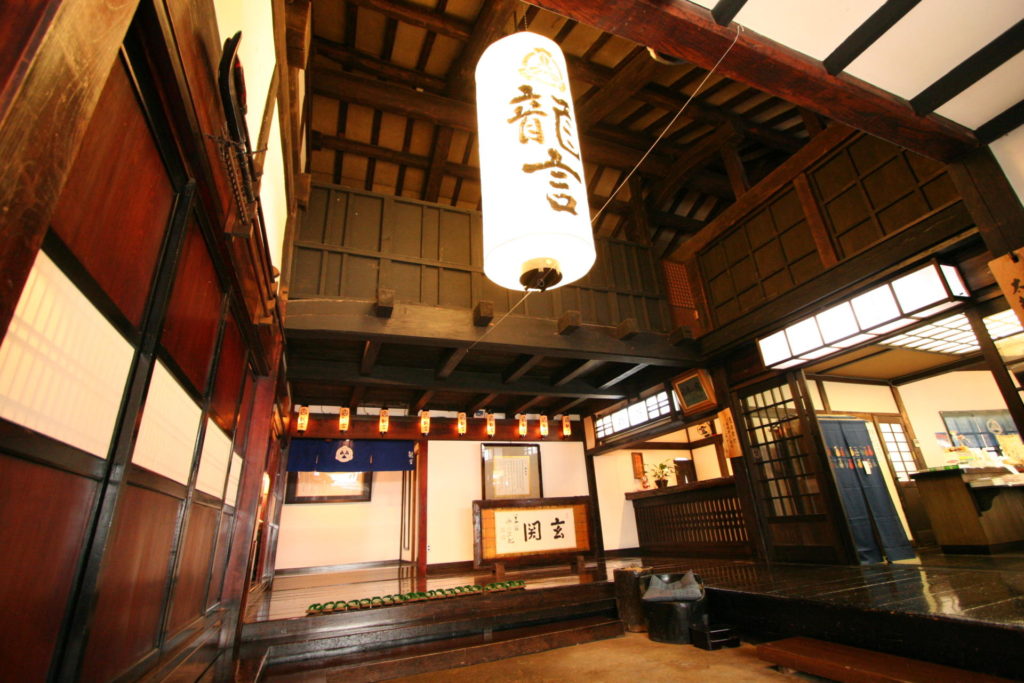
“All the buildings are single-story, so you never sleep above somebody else at Ryugon,” Fukuda says. “That alone makes this an interesting hotel. But we also have several excellent onsen, including one that can be reserved for private use that we feel is unmatched—you just have to come and see it.”
The property also has other buildings and facilities including a teahouse, pub and even a karaoke house. The white-and-dark wood buildings are not on a grid, but along lines that feel more like a wandering path.
While Niigata sounds as if it is way out there, it is accessible by Shinkansen or expressway all the way (one short transfer by train).

Ryugon
Sakadoyamagiwa 79, Minami-Uonuma, Niigata-ken 949-6611
Tel: (025) 772-3470
E-mail: info@ryugon.co.jp
Web: www.ryugon.co.jp
Hoshi
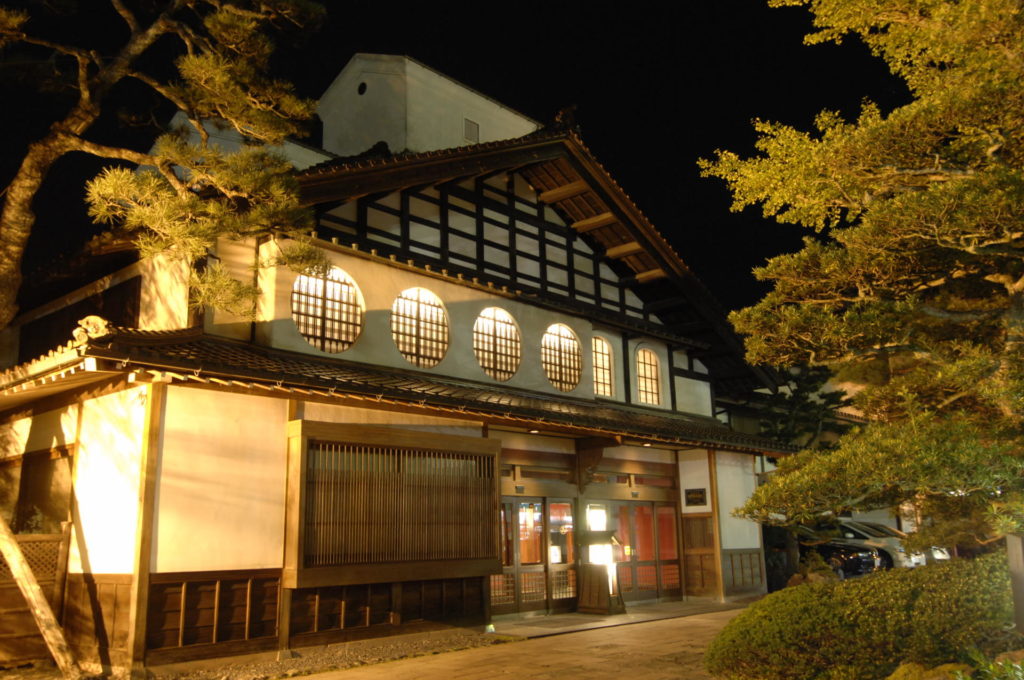
As interestingly old-fashioned as it sounds, Zenguro Hoshi’s name is hardly unique. After all, 46 generations of the men in his family have had the Zenguro name; 46 generations of the family have run the 1,300-year-old Hoshi, officially (Guinness says so) the oldest hotel in the world.
“We have a great onsen, one that’s good for your spirit, and your body—that’s why we’re still here,” Hoshi says. “Also, we have a great water source up on Mt. Hakusan, and we don’t have many earthquakes or typhoons here.”
According to local legend, a Buddhist priest climbing up the relatively isolated, but sacred, Mt. Hakusan had a vision of a hot spring source in a nearby town. The water, the spirit said (with remarkable detail), will have curative properties. The priest sought out the source, found satori and all that, but it was his disciple, Hoshi, who got to run the inn.

Located near Komatsu, Ishikawa Prefecture, Hoshi today is a 100-room ryokan, and it exudes ancient Japan from the second you enter. Each of the four houses of the inn is named for the season; prices go from reasonable packages to more than ¥50,000 per person per night.
“We can accommodate 350 people, but that was more in the days of big groups,” Hoshi says. “Today we have a lot more couples and families, so it’s quieter.”
They also get some serious repeat business. “There was a guest from Fukui who came recently and showed me some old maps and things—his family has been coming here since the Edo Period.”
Hoshi has a wide range of onsen; the water is (as always), said to be therapeutic, but here they also drink it. “It’s good for…you know what benpin is? Women like it, and it’s good for your internal organs.”
Zenguro Hoshi, it should be added, tells a good tale, is something of a philosopher and will be happy, he says, to talk with visiting readers.
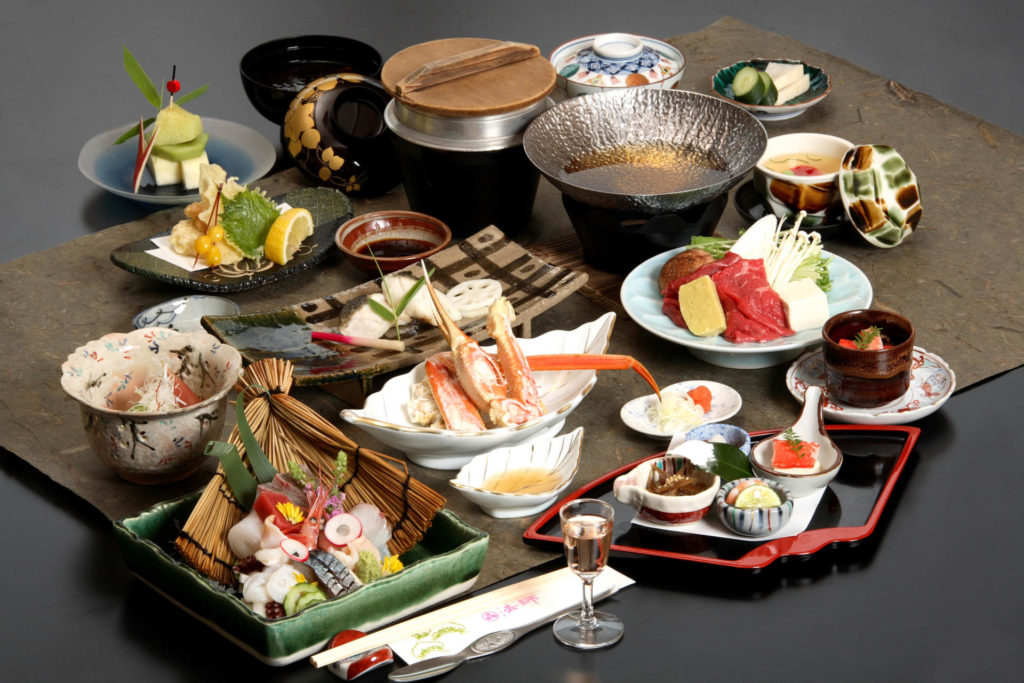
Hoshi
Awazu Onsen, Komatsu-shi, Ishikawa-ken 923-0326
Tel: (0761) 65-1111
Web: www.ho-shi.co.jp




